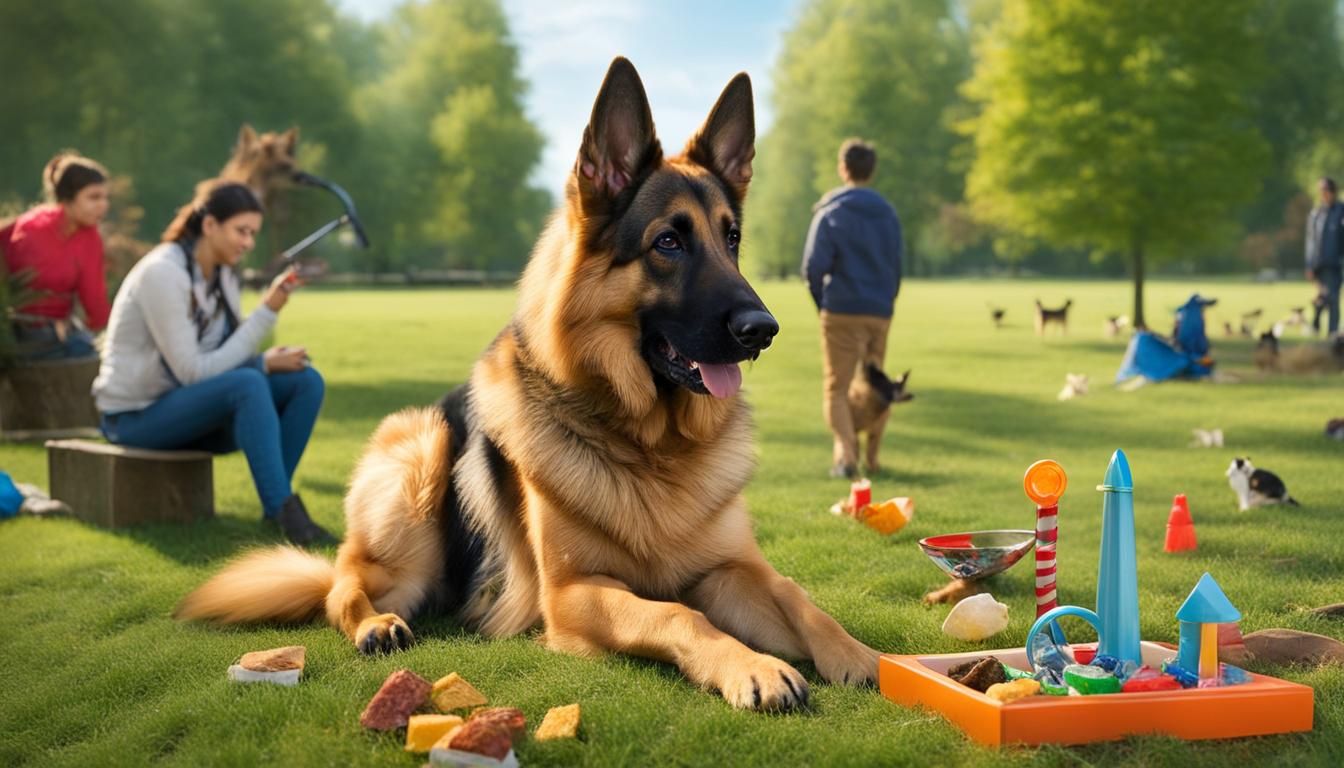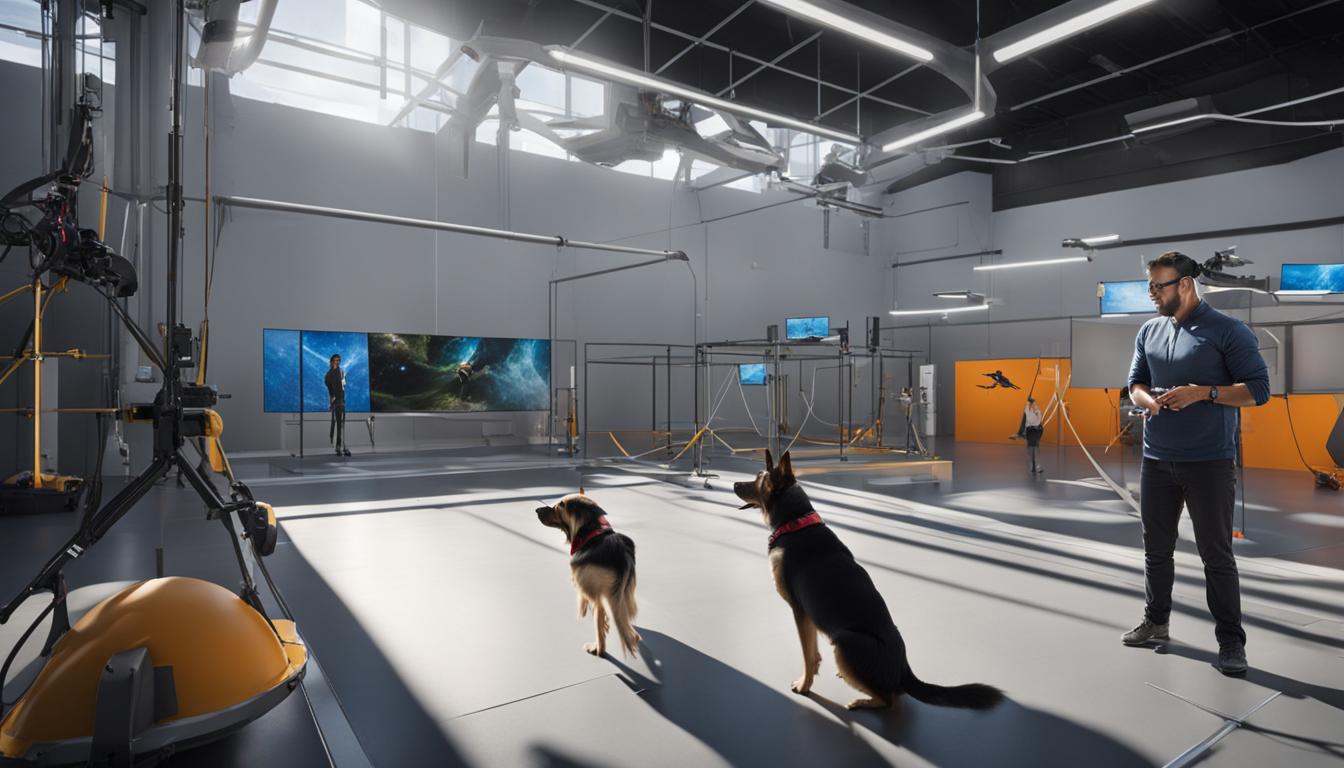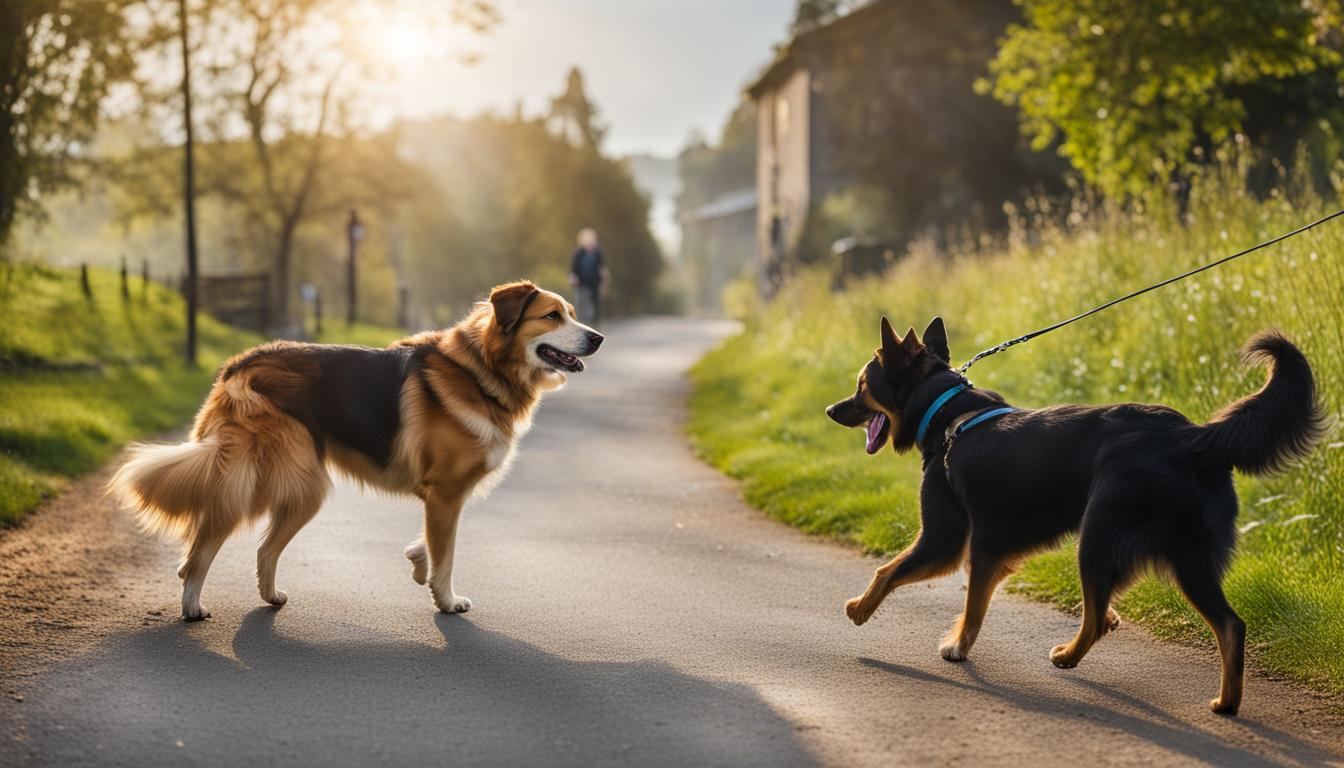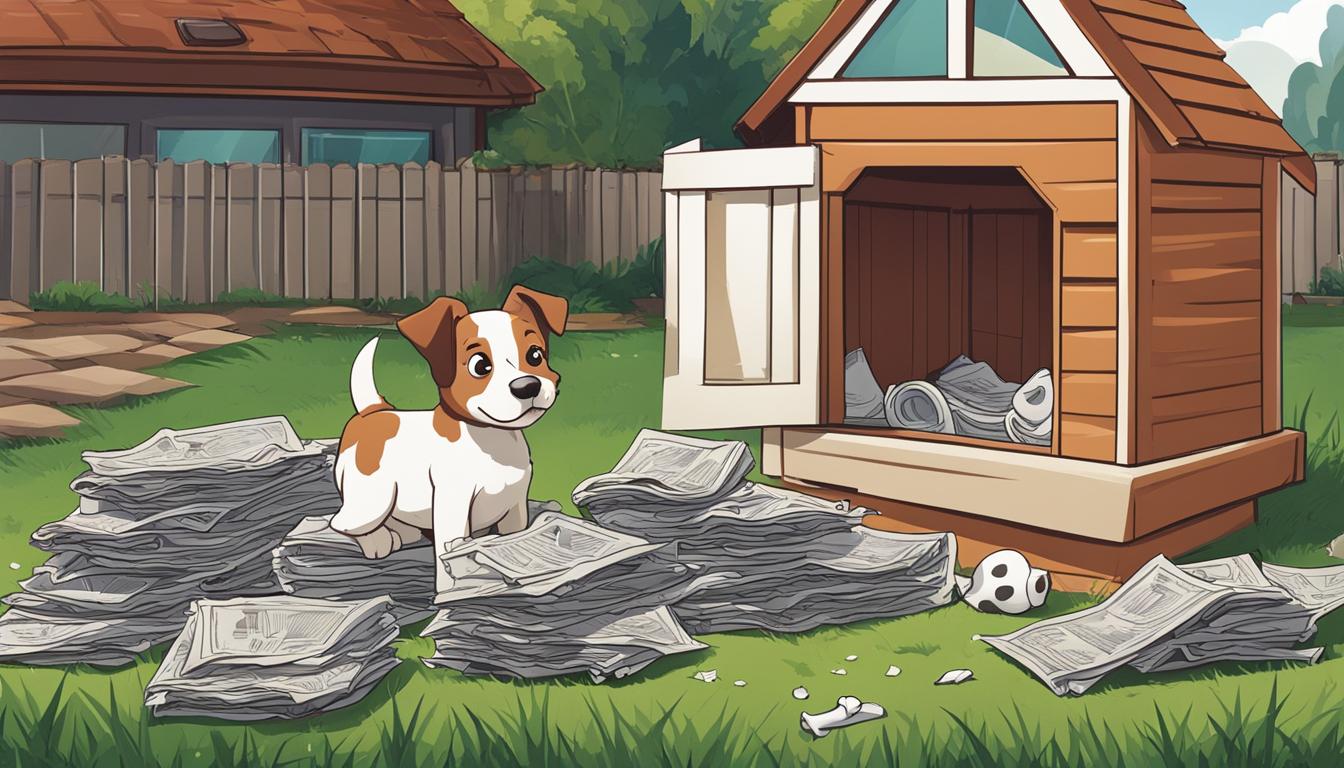Training a dog can be a rewarding experience, but it can also be challenging, especially when it comes to keeping their focus amidst distractions. Whether it’s the hustle and bustle of a busy park or the enticing smells of a nearby squirrel, distractions can easily divert a dog’s attention away from their training. That’s why mastering distraction techniques is crucial for successful dog training.
Distraction training involves creating a training environment that prepares your dog to handle distractions effectively. By gradually exposing them to varying levels of distractions and teaching them to focus on you, you can build their concentration and obedience.
This article will explore the different distraction training techniques for dogs, providing insights on how to train your furry friend to maintain focus in distracting environments. From managing distractions to matching rewards, we’ll cover it all to help you become a distraction training pro.
Key Takeaways:
- Distraction training is crucial for keeping a dog’s focus amidst distractions.
- Creating a distraction-free environment is essential for effective training.
- Matching rewards to distractions helps reinforce focus and obedience.
- Building focus through distraction training requires consistency and understanding your dog’s needs.
- With proper training and positive reinforcement, dogs can learn to ignore distractions and respond to commands.
Creating a Distraction-Free Environment for Training
When it comes to training your dog, creating a distraction-free environment is crucial for successful outcomes. Distractions can hinder your dog’s focus and make it challenging for them to learn and follow commands. By managing distractions during training sessions, you can help your dog overcome distractions and improve their obedience skills.
One effective way to manage distractions is to eliminate or minimize any factors that may grab your dog’s attention. This includes controlling external stimuli such as noise, movement, or other animals. Find a quiet and controlled space where you can conduct your training sessions without unnecessary interruptions. By removing potential distractions, you can create an environment that allows your dog to focus solely on the training exercises.
Another important aspect of managing distractions is to gradually increase the difficulty level as your dog progresses in their training. Start with low-level distractions and gradually introduce more challenging scenarios. For example, if you’re working on obedience training, start with simple commands near minor distractions and gradually incorporate more challenging distractions as your dog becomes more comfortable and responsive.
By building up the difficulty level gradually, you can help your dog develop the ability to ignore distractions and focus on your commands. It’s important to keep the training sessions short and manageable, ensuring that your dog remains engaged and motivated throughout. Remember to always provide positive reinforcement and rewards when your dog successfully ignores distractions and follows your commands, as this will encourage them to continue focusing on the training exercises.

Summary:
- Matching rewards to distractions is crucial in distraction training.
- Reactive dogs require gradual exposure to distractions to build tolerance.
- Using the hardest distractions as rewards reinforces obedience and concentration.
- Patience and consistency are key to achieving success in distraction training.
| Distraction Techniques for Reactive Dogs | Training Dogs to Ignore Distractions | Advanced Distraction Handling in Training |
|---|---|---|
| Gradual exposure to manageable distractions | Consistent reinforcement of desired behaviors | Incorporation of difficult distractions as rewards |
| Patience and understanding of individual needs | Building tolerance and focus through rewards | Increased obedience and concentration |
Building Focus Through Distraction Training
Building focus through distraction training is a crucial aspect of dog training that allows dogs to develop the ability to ignore distractions and concentrate on the owner’s commands. By gradually increasing the difficulty of distractions while keeping the training exercises short and manageable, owners can help their dogs build focus in distracting environments.
It is important to start with simple commands near minor distractions and gradually progress to more challenging scenarios. By doing so, the dog learns to ignore external stimuli and focus on the training exercises. Consistency and patience are key during this process, as every dog learns at their own pace.
Understanding the dog’s individual needs is also essential in building focus through distraction training. Each dog has a unique level of excitement, motivation to listen, and ease with specific tasks. By tailoring the training to the dog’s preferences and abilities, owners can effectively help the dog concentrate and respond to commands.
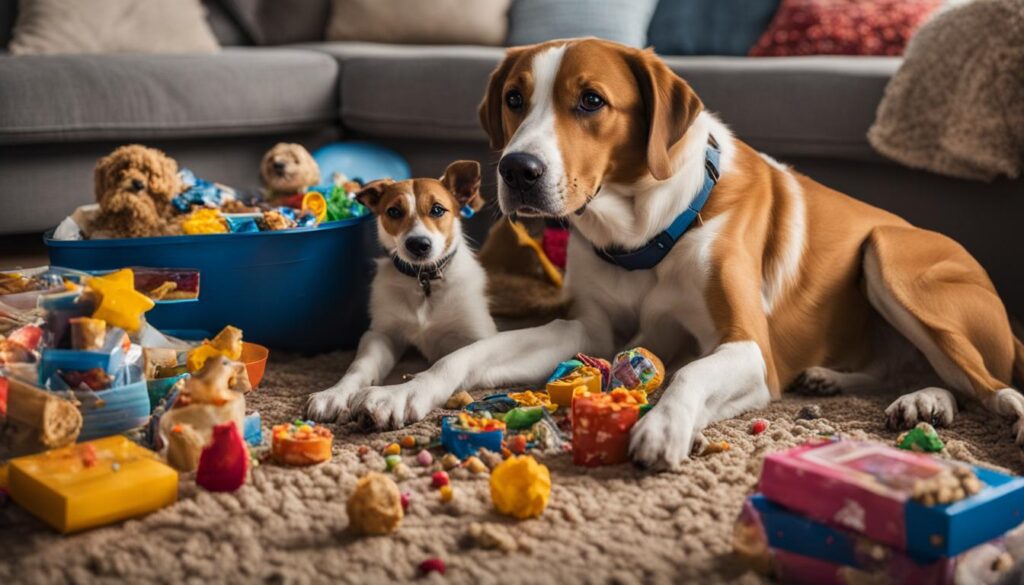
Table: Distraction-Based Training Challenges and Solutions
| Challenge | Solution |
|---|---|
| High-Intensity Distractions | Start with low-level distractions and gradually increase the difficulty |
| Overexcitement or Lack of Motivation | Use high-value treats or engaging toys as rewards to capture the dog’s attention |
| Inconsistent Training | Be consistent in training sessions and techniques, ensuring clear communication |
| Limited Focus Duration | Keep training exercises short and engaging to maintain the dog’s focus |
By addressing these challenges and implementing suitable solutions, owners can effectively build focus through distraction training. It is essential to remember that distractions are a part of the dog’s environment, and with consistent practice and positive reinforcement, dogs can learn to ignore distractions and respond to commands regardless of the circumstances.
Conclusion
Distraction training is an essential component of dog training that helps dogs maintain focus even in distracting environments. By managing distractions, creating a distraction-free environment, and matching rewards to distractions, you can successfully train your dog to ignore external stimuli and concentrate on the training exercises.
Building focus through distraction training takes time, patience, and understanding the individual needs of your dog. With consistent training and positive reinforcement, your dog can become adept at handling distractions and responding to commands regardless of the environment they are in.
Remember, dog training is a journey with its own challenges and solutions. By implementing effective distraction-based training techniques, you can navigate these challenges and build a strong foundation of obedience and focus for your furry friend. So, embrace the process, stay persistent, and enjoy the rewarding experience of training your dog to overcome distractions and become the well-behaved companion you’ve always wanted.
FAQ
What is distraction training in dog training?
Distraction training is an essential aspect of dog training that helps keep dogs focused even amidst chaos.
Why is setting the dog up for success important in distraction training?
Setting the dog up for success is crucial, avoiding distractions that are too easy or too difficult for the dog to handle.
What is the importance of managing distractions and the training environment in distraction training?
Managing both distractions and the training environment is important, ensuring that the dog learns to concentrate on the owner and not the distractions.
How do you match rewards to distraction levels in training?
Matching rewards to distraction levels is crucial in the training process. Every dog has a different hierarchy of rewards, and understanding their preferences can help in maintaining focus during training.
How can you eliminate or minimize distractions during the training process?
It is important to eliminate or minimize any factors that could grab the dog’s focus. This includes controlling external distractions such as noise, movement, or other animals.
How can you create a distraction-free environment for training?
By creating a distraction-free environment, the dog can focus on the training exercises and learn to ignore external distractions.
What type of rewards should be used in distraction training?
Dogs repeat rewarding behaviors, so it is essential to offer rewards that are more enticing than the distractions themselves. This may involve using high-value treats or engaging toys that capture the dog’s attention.
Why is understanding the dog’s hierarchy of rewards important in distraction training?
Understanding the dog’s hierarchy of rewards is crucial in determining the best rewards to use in different distraction scenarios.
How can you build focus through distraction training?
Building focus through distraction training involves gradually increasing the difficulty of distractions while keeping the training exercises short and manageable.
What are the key factors in building focus through distraction training?
Consistency, patience, and understanding the dog’s individual needs are key in building focus through distraction training.
How can distraction training help dogs in distracting environments?
Distraction training is an essential component of dog training that helps dogs maintain focus even in distracting environments.

